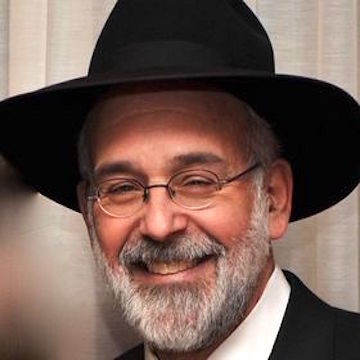Rabbi David Etengoff
336 results total, viewing 231 - 240
|
Our parasha, LechLecha, contains the sole instances of the specific phrase, “lebrit olam,” (“as an everlasting covenant,”) that appear in Chamisha Chumshei Torah (the Five …
more
By Rabbi David Etengoff
|
10/25/17
|
|
We encounter the following pasuk toward the end of our parasha, Noach: “These are the generations of Terah, Terah was the father of Abraham, Nahor and Haran” (Bereishit 11:27). If you …
more
By Rabbi David Etengoff
|
10/18/17
|
|
While Shemini Atzeret occurs at the end of Succot, it is, as Midrash Bereshit Rabbah notes, a chag bifnei atzmo (festival in its own right) rather than a part of Succot. (100:7) This is clearly …
more
By Rabbi David Etengoff
|
10/10/17
|
|
The festival of Succot contains two major mitzvot, dwelling in the Succah on the night of the 15th of Tishrei, and the taking of the Arba’at ha-Minim (the Four Species). Both of these acts are …
more
By Rabbi David Etengoff
|
10/3/17
|
|
We have been on a spiritual journey since the beginning of Chodesh Elul. This month helps us to focus upon what is false and what is real, in order that we may pursue matters of ultimate spiritual …
more
By Rabbi David Etengoff
|
9/30/17
|
|
If you ask most Jews, “What is the name of the next holy day after Rosh Hashanah,” they would probably respond with, “Yom Kippur.” They would answer in this fashion, since it …
more
By Rabbi David Etengoff
|
9/19/17
|
|
This is the final Shabbat of 5777. We have been listening to the sound of the shofar each weekday morning throughout the month of Elul. This Motzai Shabbat, we will begin the recitation of Selichot …
more
By Rabbi David Etengoff
|
9/13/17
|
|
Our parasha, KiTavo, contains a verse which underscores the unique relationship that obtains between Hashem and the Jewish people when we are loyal to His holy Torah:
“And it will be if you …
more
By Rabbid David Etengoff
|
9/6/17
|
|
One of the major shul-based practices of the month of Elul is listening to the clarion call of the shofar following the morning recitation of Psalm 27, “L’David Hashem ori …
more
By Rabbi David Etengoff
|
8/30/17
|
|
The Torah employs the phrase, “Ki tetze l’milchamah al oivecha” (“When you go forth to war against your enemy”) two times in Devarim. The first instance appears in our …
more
By Rabbi David Etengoff
|
8/23/17
|

 63.0°,
A Few Clouds and Breezy
63.0°,
A Few Clouds and Breezy 